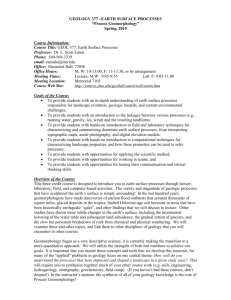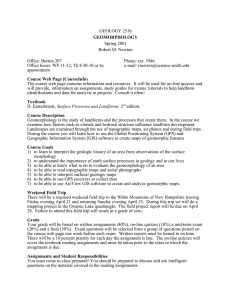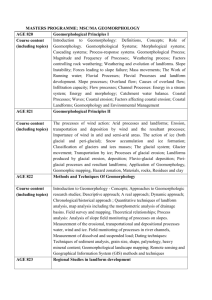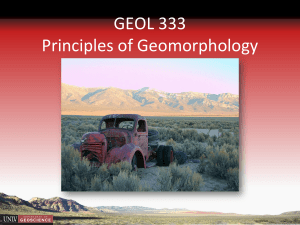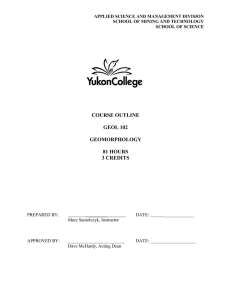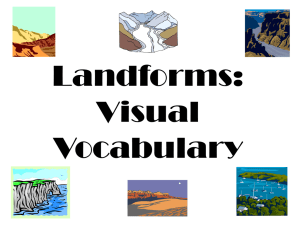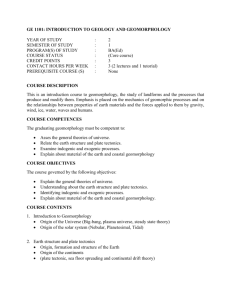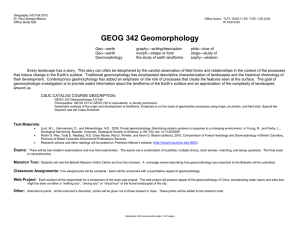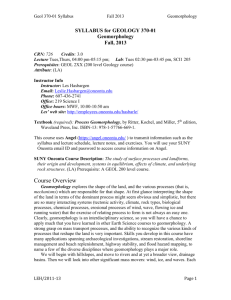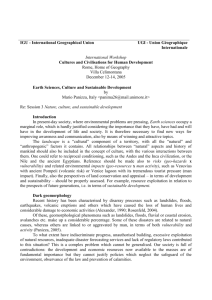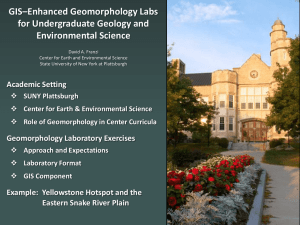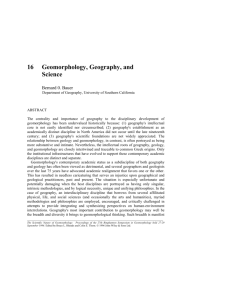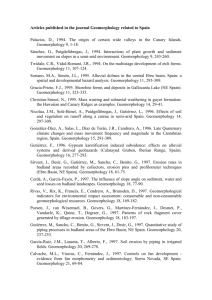GEOLOGY 385 -GEOMORPHOLOGY
advertisement
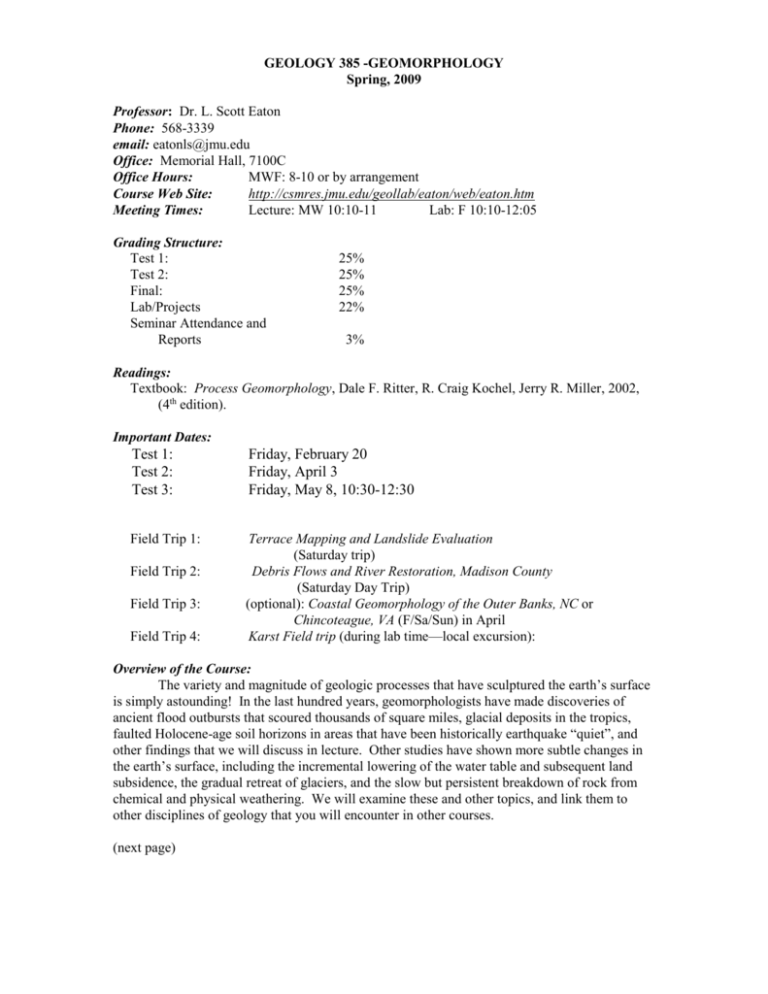
GEOLOGY 385 -GEOMORPHOLOGY Spring, 2009 Professor: Dr. L. Scott Eaton Phone: 568-3339 email: eatonls@jmu.edu Office: Memorial Hall, 7100C Office Hours: MWF: 8-10 or by arrangement Course Web Site: http://csmres.jmu.edu/geollab/eaton/web/eaton.htm Meeting Times: Lecture: MW 10:10-11 Lab: F 10:10-12:05 Grading Structure: Test 1: Test 2: Final: Lab/Projects Seminar Attendance and Reports 25% 25% 25% 22% 3% Readings: Textbook: Process Geomorphology, Dale F. Ritter, R. Craig Kochel, Jerry R. Miller, 2002, (4th edition). Important Dates: Test 1: Test 2: Test 3: Friday, February 20 Friday, April 3 Friday, May 8, 10:30-12:30 Field Trip 1: Terrace Mapping and Landslide Evaluation (Saturday trip) Debris Flows and River Restoration, Madison County (Saturday Day Trip) (optional): Coastal Geomorphology of the Outer Banks, NC or Chincoteague, VA (F/Sa/Sun) in April Karst Field trip (during lab time—local excursion): Field Trip 2: Field Trip 3: Field Trip 4: Overview of the Course: The variety and magnitude of geologic processes that have sculptured the earth’s surface is simply astounding! In the last hundred years, geomorphologists have made discoveries of ancient flood outbursts that scoured thousands of square miles, glacial deposits in the tropics, faulted Holocene-age soil horizons in areas that have been historically earthquake “quiet”, and other findings that we will discuss in lecture. Other studies have shown more subtle changes in the earth’s surface, including the incremental lowering of the water table and subsequent land subsidence, the gradual retreat of glaciers, and the slow but persistent breakdown of rock from chemical and physical weathering. We will examine these and other topics, and link them to other disciplines of geology that you will encounter in other courses. (next page) Geomorphology began as a very descriptive science; it is currently making the transition to a more quantitative approach. We will utilize the strengths of both end members to achieve our goals. It is important that you master the concepts and tools that we develop this semester, for many of the “applied” problems in geology focus on one central theme: How well do you understand the processes that have impacted and shaped a landscape in a given study area? This will require you to synthesize together much of your other course work of soils, engineering, hydrogeology, stratigraphy, geochemistry, field camp, and other courses. (If you haven’t had these courses, don’t despair!) In the instructor’s opinion, the synthesis of all of your geology knowledge is the core of Process Geomorphology! The Tentative Plan The Earth’s Surface - An Introduction Chapter 1 The Angry Earth: Internal Forces and the Impact of Climate Chapter 2 Chemical Weathering and Dirt, (a.k.a. Soils) Chapter 3 Cracking, Slipping and Sliding - Physical Weathering and Mass Movements Chapter 4 Your Friend, the Drainage Basin, and All of Its Secrets Chapter 5 A River Bath - Fluvial Processes and Landforms Chapters 6, 7 Black Holes and Sinking Fast - Karst Processes and Landforms Chapter 12 Careening Glaciers - Glaciers and Glacial Mechanics Chapter 9 The Aftermath - Glacial Erosion, Deposition and Landforms Chapter 10, maybe Chapter 11 A Week at the Beach - Coastal Processes and Landforms Chapter 13 Course Goal & Objectives The primary goal of this course is to study the characteristics, processes, and evolution of landforms. The tools of topographic maps, aerial photography, remote sensing techniques, and field and laboratory excursions will be implemented to achieve this endeavor. The objectives of this course are: Objective 1: to understand the linkages between various processes (e.g., running water, gravity, wind, ice) and the resulting landforms. Objective 2: to develop the technical skills required for the study of geomorphology. Objective 3: to improve observational, verbal, and writing skills. Objective 4: to promote critical thinking skills. Objective 5: to apply the scientific method through field and laboratory work. Objective 6: to learn how to work in groups.
